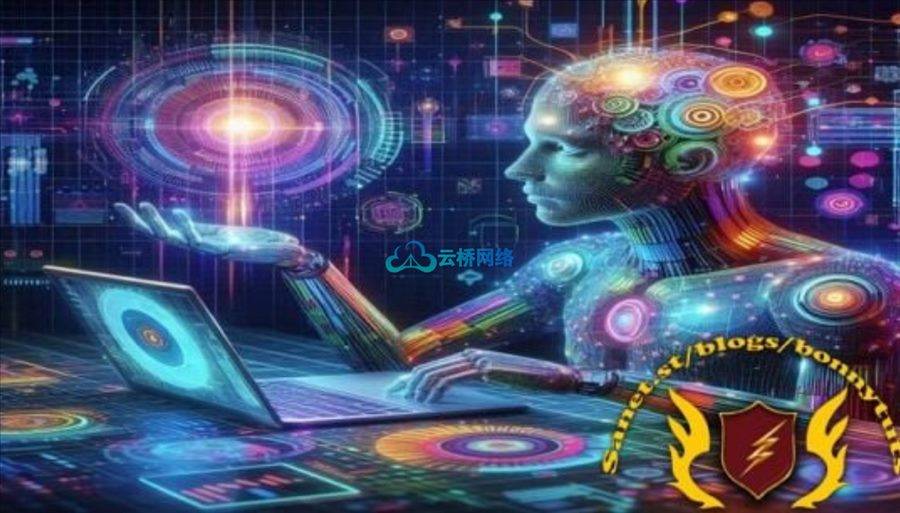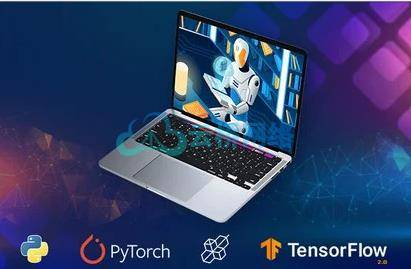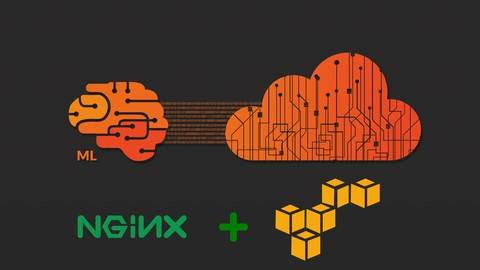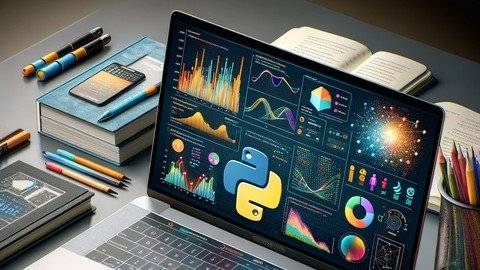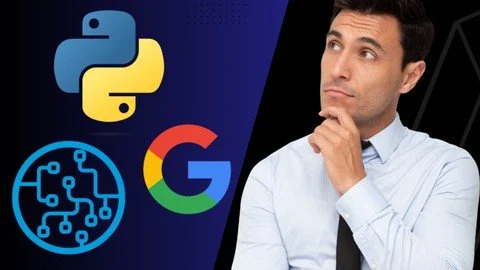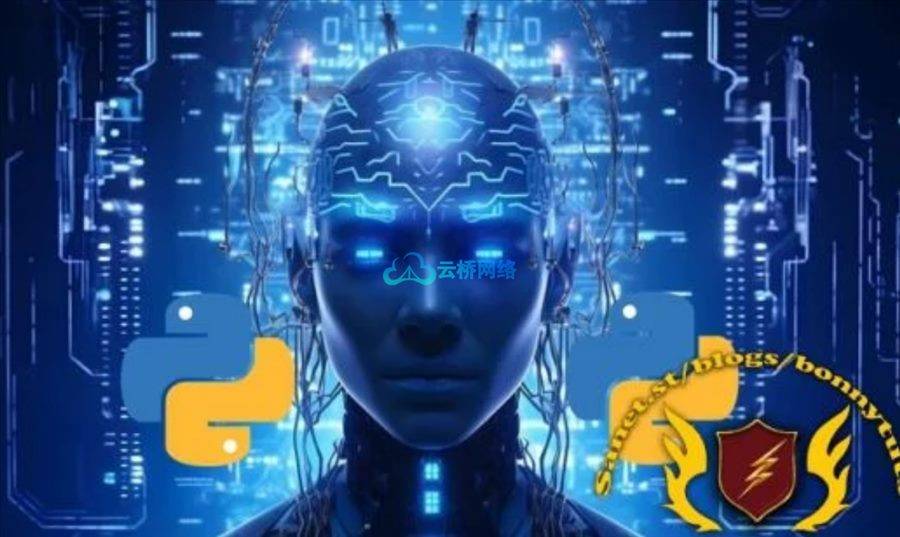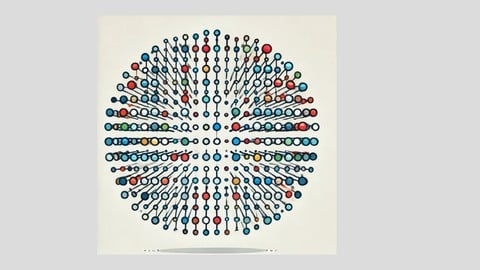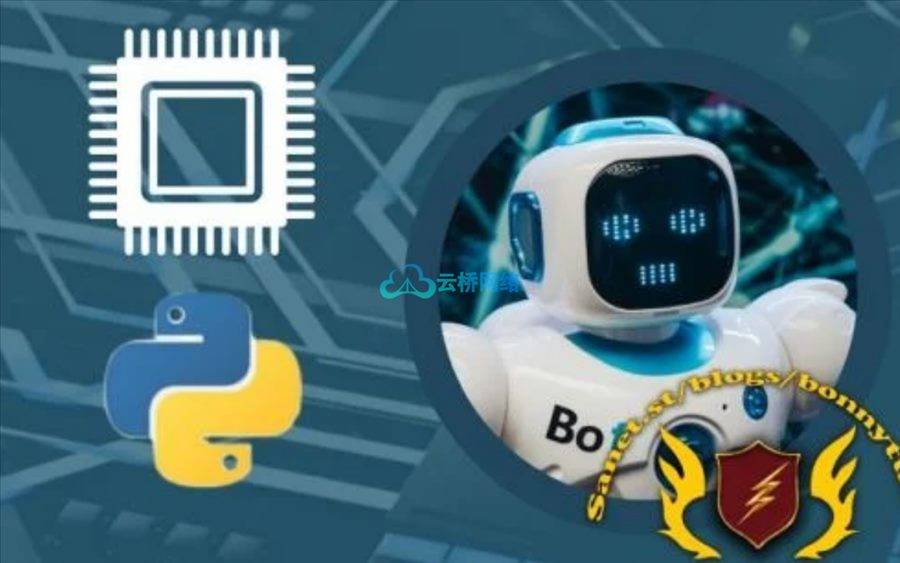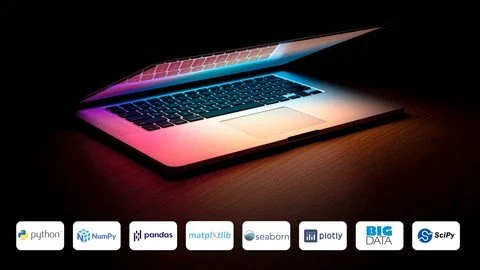
通过构建 100 个项目来掌握 Python 与机器学习和数据科学。构建网站、游戏、应用程序和工具!课程描述:您是否渴望成为Python编程专家并深入研究机器学习和数据科学领域?您是否渴望构建现实世界的项目,不仅可以巩固您的技能,还可以为成功的科技职业生涯铺平道路?别再犹豫了!我们的综合课程“通过构建 100 个项目,利用机器学习和数据科学掌握 Python”旨在将您转变为 Python 强者,并让您具备在技术领域脱颖而出所需的技能。Python With Machine Learning: 100 Days Of Coding Like A Pro
课程亮点:掌握 Python:开始通过掌握 Python 来开启您的旅程,Python 是业界最通用且最受欢迎的编程语言之一。您将从基础知识开始,逐步进入高级主题,确保打下坚实的基础。实践学习:本课程基于项目,这意味着你不仅仅学习理论;您将通过构建 100 个多样化的实用项目来应用您的知识。每个项目都经过精心设计,旨在强化特定的 Python、机器学习和数据科学概念。 真实世界应用程序:准备好创建模仿真实世界场景的网站、游戏、应用程序和工具。您将从事解决实际问题并向潜在雇主展示您的技能的项目。机器学习和数据科学:深入研究机器学习和数据科学的迷人领域。您将学习如何分析数据、创建预测模型以及从大型数据集中提取有价值的见解。 Web 开发:使用 Python 以及 Django 和 Flask 等流行框架构建动态网站时,探索 Web 开发的世界。学习创建具有实时功能的 Web 应用程序。游戏开发:使用 Python 和 Pygame 等流行库开发交互式游戏。从 2D 平台游戏到益智游戏,您将对游戏设计和编码有深入的了解。 应用程序开发:使用 Python 以及 Tkinter 和 Kivy 等工具创建桌面和移动应用程序。构建可以在从 Windows 到 Android 等各种平台上运行的应用程序。 工具和实用程序:制作可以简化日常任务的方便工具和实用程序。无论是自动化数据处理还是构建生产力应用程序,您都将拥有完成这一切的技能。 项目组合:在整个课程中,您将构建一个包含 100 个项目的专业组合,这些项目展示了您作为 Python 开发人员的多功能性和熟练程度,使您在潜在雇主面前脱颖而出。职业发展:完成本课程后,您将拥有强大的 Python 基础、机器学习和数据科学方面的专业知识以及一系列令人印象深刻的项目,使您成为就业市场上抢手的候选人。 终身访问:获得终身获取课程材料、更新以及学习者和教师的支持社区。即使完成课程后仍可继续学习和成长。包括的工具:PythonNumPyPyPandasMatplotlibSeabornPlotly大数据 SciPy 应该报名的人:想要使用 Python 开始编程之旅的初学者。希望增强机器学习和数据科学技能的中级 Python 开发人员。任何渴望成为Web 开发人员、游戏开发人员、应用程序开发人员或数据科学家。寻求构建实际项目实践经验的技术爱好者。完成本课程后,您将拥有应对 Python、机器学习和数据科学领域现实挑战的知识、经验和信心。立即注册并踏上变革性的学习之旅,为科技行业充满激动人心的机会的世界打开大门!
你将学到什么
你将通过在100天内创建100个独特的项目来掌握 Python 编程语言
你将学习 NumPy、Pandas、Matplotlib、Seaborn、Scikit、Plotly、SciPy 等。
开发100个 Python 集合
您将学习使用 Python 进行数据科学和机器学习的实用方法,构建
游戏、应用程序、网站、工具等。
要求
不需要任何一行编码经验 – 我将指导您了解学习
具有稳定互联网连接的 PC 或 Mac所需的所有必需知识
无需付费软件。我将指导您如何下载和安装课程中使用的每个软件。
MP4 | 视频:h264,1280×720 | 音频:AAC,44.1 KHz
语言:英语 | 大小:16.2 GB | 时长:59小时37分钟
Master Python with Machine Learning and Data Science by building 100 projects. Build websites, games, apps and tools!
What you’ll learn
You’ll achieve mastery in the Python programming language through the creation of 100 distinctive projects spanning 100 days
You will learn NumPy, Pandas, Matplotlib, Seaborn, Scikit, Plotly, SciPy, etc.
Develop a collection of 100 Python projects to build and enhance your portfolio for developer job applications
You will learn the practical ways of using Python for Data Science and Machine Learning
Build games, apps, websites, tools etc.
Requirements
Not a single line of coding experience required – I’ll guide you through all the essentials you need to learn
PC or Mac with stable internet connection
No paid software required. I will guide you on how to download and install each software used in the course.
Description
Course Description:Are you eager to become a Python programming expert and delve deep into the realms of Machine Learning and Data Science? Do you aspire to build real-world projects that not only solidify your skills but also pave the way for a successful career in tech? Look no further! Our comprehensive course, “Master Python with Machine Learning and Data Science by Building 100 Projects,” is designed to transform you into a Python powerhouse and equip you with the skills needed to excel in the world of technology.Course Highlights:Python Mastery: Begin your journey by mastering Python, one of the most versatile and in-demand programming languages in the industry. You’ll start with the basics and gradually progress to advanced topics, ensuring a strong foundation.Hands-On Learning: This course is project-based, meaning you won’t just learn theory; you’ll apply your knowledge by building 100 diverse and practical projects. Each project is carefully designed to reinforce specific Python, Machine Learning, and Data Science concepts.Real-World Applications: Get ready to create websites, games, applications, and tools that mimic real-world scenarios. You’ll work on projects that solve actual problems and showcase your skills to potential employers.Machine Learning & Data Science: Dive into the fascinating fields of Machine Learning and Data Science. You’ll learn how to analyze data, create predictive models, and extract valuable insights from large datasets.Web Development: Explore the world of web development as you build dynamic websites using Python and popular frameworks like Django and Flask. Learn to create web applications with real-time functionality.Game Development: Develop interactive games with Python and popular libraries like Pygame. From 2D platformers to puzzle games, you’ll gain a solid understanding of game design and coding.App Development: Create desktop and mobile applications using Python and tools like Tkinter and Kivy. Build applications that can run on various platforms, from Windows to Android.Tools and Utilities: Craft handy tools and utilities that can simplify everyday tasks. Whether it’s automating data processing or building productivity apps, you’ll have the skills to do it all.Project Portfolio: Throughout the course, you’ll build a professional portfolio with 100 projects that showcase your versatility and proficiency as a Python developer, making you stand out to potential employers.Career Advancement: As you complete this course, you’ll have a strong Python foundation, expertise in Machine Learning and Data Science, and a portfolio of impressive projects, making you a sought-after candidate in the job market.Lifetime Access: Gain lifetime access to course materials, updates, and a supportive community of learners and instructors. Continue learning and growing even after completing the course.Tools Included:PythonNumPyPandasMatplotlibSeabornPlotlyBig Data SciPyWho Should Enroll:Beginners who want to start their programming journey with Python.Intermediate Python developers looking to enhance their skills in Machine Learning and Data Science.Anyone aspiring to become a web developer, game developer, app developer, or data scientist.Tech enthusiasts seeking hands-on experience in building practical projects.By the end of this course, you’ll have the knowledge, experience, and confidence to tackle real-world challenges in Python, Machine Learning, and Data Science. Enroll today and embark on a transformative learning journey that can open doors to a world of exciting opportunities in the tech industry!
Overview
Section 1: Learning Python Fundamentals
Lecture 1 History, Scope, Features and Applications of Python and Installing IDE
Section 2: Understanding Python Syntax
Lecture 2 Python Identifiers, Syntax, Indentation, variables and Comments
Section 3: Exploring Python Numeric Types
Lecture 3 Understand Python Numbers: Integer, Float, Complex Numbers, Booleans
Section 4: Grasping Python Variables
Lecture 4 Identifiers and Variables: Creation, Rules for Naming, Assignment and Output
Section 5: Python’s Data Type Fundamentals
Lecture 5 Numeric Data Types,Booleans,Type Conversion: Converting One Data Type to Another
Section 6: Mastering Python Operators
Lecture 6 Arithmetic Operators, Assignment Operators, Comparison Operators
Lecture 7 Project: Simple Calculator
Section 7: Manipulating Strings
Lecture 8 Defining and String to Variable, Single line and Mutliline Strings
Lecture 9 Define String Indexing, String Slicing, String Concatenation, Checking String
Lecture 10 Project: Email Slicer
Section 8: Managing Lists
Lecture 11 Python List, List Length, List Indexing, List Slicing, List Methods, Check Lists
Section 9: Utilizing Tuples
Lecture 12 Python Tuples, Tuple Items, Tuple length, Tuple constructor, Tuple Indexing
Section 10: Harnessing Sets
Lecture 13 Python Set, Set Items, Access Items, Add Items, Remove Items, Join Two Sets
Section 11: Diving into Dictionaries
Lecture 14 Python Dictionary, Dictionary Items, Dictionary Length, Accessing items, Update
Lecture 15 Project: Currency Converter
Section 12: Input and Output Functions
Lecture 16 Input output Functions, Print(),input()
Lecture 17 Project: Quiz Game
Section 13: Conditional Logic
Lecture 18 Flow Control Statements, Conditional Statements, if statement, How if condition
Lecture 19 Project: Age Calculator
Section 14: Iterating with Loops
Lecture 20 Python Loops, for loops, How for loop works ?,while loop, How while loop works ?
Lecture 21 Project: Rock Paper Scissor
Section 15: Controlling Flow with Transfer Statements
Lecture 22 Break statement, How break works ? continue statement, How continue works ?
Section 16: Creating and Using Functions
Lecture 23 Functions passed as parameter, Nested Functions, Pass Sequence Types of Function
Lecture 24 Python Functions, Creating a Function, Calling a Function, Function Arguments
Lecture 25 Project: Contact Book App
Section 17: Exploring Modules and Packages
Lecture 26 Python Modules, Create a Module, Naming and Renaming a Module, Built-in Modules
Lecture 27 Project: Dice Rolling
Section 18: Library Management System
Lecture 28 Project: BMI Calculator
Section 19: List Comprehensions
Lecture 29 Comprehensions in python, List Comprehensions, Dictionary Comprehensions
Lecture 30 Project: Number Guessing Game
Section 20: OOPs Fundamentals
Lecture 31 Introduction to Object Oriented Programming, Classes and Objects, Create Class
Section 21: OOPs Principle
Lecture 32 OOPs Principles, Encapsulation, Inheritance, Method Overriding, Types of Inherit
Lecture 33 Project: ATM
Section 22: Working with File Systems
Lecture 34 What is a File ?,File Modes, Open a file on server, Read only parts of file
Section 23: Handling Exceptions
Lecture 35 Exceptions, Exceptions Handling, try block, Many Exceptions, else block
Lecture 36 Project: To-do List App
Section 24: Regular Expressions Mastery
Lecture 37 Regular Expressions, RegEx Module, Sequence Characters, Reg Ex Functions
Lecture 38 project: Password Generator
Section 25: Tic Tac Toe Project
Lecture 39 Project – Tic Tac Toe Project
Section 26: Understanding the Date Time Module
Lecture 40 Python Datetime Module, Datetime Module Class, Python Date Class, Python Date
Lecture 41 Project: Birthday Finder
Section 27: Exploring Databases
Lecture 42 Test MySQL Connector, Create Connection, Create Database, Create if Database Ex
Section 28: Networking in Python
Lecture 43 Python Urllib Module, Python Networking, What is a Socket ? , Socket Terminology
Section 29: Applying Decorators and Generators
Lecture 44 Python Decorators, Chaining Decorators, Decorators with Parameters, Generators
Section 30: Working with Arrays
Lecture 45 Python Arrays, Create an Array, Adding Elements to an Array, Accessing Element
Section 31: Harnessing the Range
Lecture 46 Range Function, Parameter Values.
Section 32: Managing Python Packages with PIP
Lecture 47 What is a PIP ? What is a Package ? Check if PIP is installed ? Install PIP
Section 33: Understanding Closures
Lecture 48 Python Closures, Closure Function, when to use Closures ?
Section 34: Handling JSON Data
Lecture 49 JSON in Python, Parse JSON – Convert from JSON to Python
Section 35: Intro of NumPy
Lecture 50 What is NumPy ?,Why use NumPy, Why NumPy is Faster than Lists ?
Section 36: Creating NumPy Arrays
Lecture 51 Create a NumPy ND array Object, Dimension in Arrays, 0-D Arrays, 1-D Arrays
Section 37: Indexing and Slicing in NumPy
Lecture 52 Access Array Elements, Access 2D-Arrays, Access 3D-Arrays, Negative Indexing
Section 38: Exploring NumPy Data Types
Lecture 53 Data Types in NumPy, checking the data type of an array
Section 39: Copying vs. Viewing NumPy Arrays
Lecture 54 Difference between copy and view, copy, view, making changes in the view
Section 40: Manipulating Array Shapes in NumPy
Lecture 55 Shape of an Array, Get the shape of an Array
Section 41: Reshaping NumPy Arrays
Lecture 56 Reshaping Arrays, Reshape from 1-D to 2-D,Reshape from 1-D to 3-D,Can we reshape
Section 42: Iterating over NumPy Arrays
Lecture 57 Iterating Arrays, Iterating 2-D arrays, iterating 3-D arrays, Iterating Arrays
Section 43: Joining NumPy Arrays
Lecture 58 Joining NumPy Arrays, Joining using Stack Functions, Stacking along rows
Section 44: Splitting NumPy Arrays
Lecture 59 Splitting NumPy Arrays, Splitting into Arrays, Splitting 2-D Arrays, Split()
Section 45: Searching NumPy Arrays
Lecture 60 Joining NumPy Arrays, Joining using Stack Functions, Stacking along Rows
Section 46: Sorting NumPy Arrays
Lecture 61 Sorting arrays, Sorting arrays of strings, Boolean array, Sorting a 2-D array
Section 47: Filtering NumPy Arrays
Lecture 62 Filtering Arrays, Creating filtering Arrays, Creating Filter directly from Array
Section 48: Randomness with NumPy
Lecture 63 What is Random Number, Pseudo Random and True Random, Generate Random Number
Section 49: Generating Data Distributions in NumPy
Lecture 64 What is Data Distribution ?,Random Distribution, Random Permutation of elements
Section 50: Combining NumPy and Seaborn
Lecture 65 Visualize Distributions with Seaborn, Install Seaborn, Distplots
Section 51: Understanding Normal and Binomial Distributions in NumPy
Lecture 66 Normal Distribution, Visualization of Normal Distribution, Binomial Distribution
Section 52: Leveraging NumPy Universal Functions
Lecture 67 What are ufuncs ?,Why use ufuncs ?,What is Vectorization ?
Section 53: Rounding and Logging with NumPy Ufuncs
Lecture 68 Rounding Decimals, Truncation, Rounding, Floor, Ceil, Logs, Log at Base 2
Section 54: NumPy Ufuncs for Summations, Products, and Differences
Lecture 69 Summations, Summation over an axis, Cumulative Sum, Products
Section 55: NumPy Ufuncs for LCM, GCD, Trigonometric, and Hyperbolic Functions
Lecture 70 Finding LCM, Finding LCM in Arrays, Finding GCD, Finding GCD in Arrays
Section 56: Set Operations with NumPy Ufuncs
Lecture 71 what is a Set ?,Create Sets in NumPy, Finding Union, Finding Intersection
Section 57: Python Data Analysis with Pandas
Lecture 72 Pandas text Data, Operations, Create a Text DataFrame with Pandas
Section 58: Working with Pandas DataFrames
Lecture 73 What is a DataFrame ? Structure of DataFrame, pandas. DataFrame, Create DataFram
Section 59: Reading Files with Pandas
Lecture 74 Read CSV Files, Max_Rows, Read JSON, Dictionary as JSON, Analyzing DataFrames
Section 60: Data Cleaning in Pandas
Lecture 75 Data Cleaning, Cleaning Empty Cells, Remove Rows ,Replace Empty Values, Replace
Section 61: Handling Missing Values with Pandas
Lecture 76 Pandas Missing Values, Handling Missing Data, Calculation with Missing Data
Section 62: Merging, Joining, and Concatenating DataFrames in Pandas
Lecture 77 Combining DataFrames, Merging DataFrames, Parameters, Concat DataFrames
Section 63: Grouping Data with Pandas DataFrame GroupBy
Lecture 78 Pandas groupby() Operation ,group() method ,Parameters, Return Value
Lecture 79 What are Ufuncs ?,Why use Ufuncs ? , What is Vectorization ?
Section 64: Sorting DataFrames in Pandas
Lecture 80 Pandas sort_values(), Sort By Labels, Order of Sorting, Sort the Columns
Section 65: Text Data Operations with Pandas
Lecture 81 Pandas text Data,Operations,Create a Text DataFrame with Pandas,Change the Case
Section 66: Statistical Analysis with Pandas
Lecture 82 Pandas Statistics, Percent change, Covariance, Correlation, Data Ranking, Rank
Section 67: Indexing and Selecting Data with Pandas
Lecture 83 Pandas Indexing, .loc() ,iloc(), Use of Notations, Using the index operator
Section 68: Reindexing and Iterating in Pandas
Lecture 84 Regular Expressions, RegEx Module, Sequence Characters, RegEx Functions
Section 69: Leveraging DateTime Functionality in Pandas
Lecture 85 Pandas Dates, Create a Range of Dates, Convert string to DataTime
Section 70: Managing TimeDeltas in Pandas
Lecture 86 Pandas TimeDeltas, Passing Strings, Passing Integers, Data Offsets, To_timedelta
Section 71: Handling Categorical Data in Pandas
Lecture 87 Categorical Data in Pandas, Uses of Categorical Data, Object Creation, Category
Section 72: Generating Summary Statistics with Pandas
Lecture 88 Pandas Summary Statistics, Pandas Sum(), Pandas Count(), Pandas Max()
Section 73: Visualizing Data with Pandas
Lecture 89 Basic Plotting using plot, Plotting methods, Bar plot
Section 74: Intro to Matplotlib
Lecture 90 What is Matplotlib ? Installation of Matplotlib, Import Matplotlib
Section 75: Customizing Markers and Lines in Matplotlib
Lecture 91 Matplotlib Markers, Format Strings using fmt, Line Reference, Color Reference
Section 76: Adding Labels, Titles, and Grids in Matplotlib
Lecture 92 Create Lables for a Plots, Create Title For a Plots
Section 77: Creating Subplots with Matplotlib
Lecture 93 Display Multiple Plots, The subplot() Function, Subplot Title, Super Title
Section 78: Crafting Scatter Plots and Bar Plots in Matplotlib
Lecture 94 Creating Scatter Plots, Compare Plots, Colors, Color Each Dot,ColorMap and Color
Section 79: Visualizing Data with Histograms and Pie Charts in Matplotlib
Lecture 95 Histogram, hist() function, Create a Histogram, Pie chart Lable, Pie Chart Start
Section 80: Getting Started with Seaborn and Exploring Color Palettes
Lecture 96 Seaborn VS Matplotlib, Seaborn, Importing Libraries, Importing DataSet
Section 81: Visualizing Data Distributions with Seaborn
Lecture 97 Plotting Univariate Distribution, Parameters, Displots, Jointplot, Pairplot, Rug
Section 82: Utilizing Seaborn for Categorical Data
Lecture 98 Categorical data Plots, Barplot, Countplot, Boxplot, Violinplot, Stripplot
Section 83: Building Matrix Plots, Grids and Regression Plots
Lecture 99 Matrix Plots, Heatmap, Cluster Plots, Griss, Facet Grid, Joint Grid, Regression
Section 84: Creating Histograms and KDE Plots with Seaborn
Lecture 100 Histogram, What id KDE?, Fitting Parametric, Distrbution, Kernel Density Estimat
Section 85: Introduction to SciPy
Lecture 101 What is SciPy?, Installation of SciPy, Import SciPy, Checking SciPy Version
Section 86: Understanding SciPy Optimizers, Sparse Data and Graphs
Lecture 102 SciPy Optimizers, Roots of an Equation, Minimizing Function, What is a Sparse
Lecture 103 Sparse Matrix Methods, Working with Graphs, Adjancency Matrix
Section 87: Working with SciPy Spatial Data
Lecture 104 Working with Spatial Data, Triangulation, Convex Hull, KDTrees ,Distance Matrix
Section 88: Exploring Matlab Array and Interpolation
Lecture 105 Working with matlab Array, EXporting Data in Matlab Format
Section 89: Introduction to Plotly and Cufflinks
Lecture 106 What is Plotly and Cuffinks?, Features of Plotly, Install Plotly
Section 90: Creating Plots using Geographical Plotting and Choropleth Maps
Lecture 107 What is Geographical Plotting ?, How to import packeges ?, Choropleth maps
Section 91: Introduction to Machine Learning
Lecture 108 What is Machine Learning?, How does Machine Learning Work?
Section 92: Exploring Machine Learning Life Cycle
Lecture 109 Machine Learning Life Cycle, Gathering Data, Data Preparation, Data Analysis
Section 93: Exploring Regression Techniques
Lecture 110 Regression, Linear Regression, Terminologies Related to Liner Regression
Section 94: Understanding Classification
Lecture 111 Classificatio Algorithm, Types of classification, Learners in classification Pro
Section 95: Working with Support Vector Machine Algorithm
Lecture 112 What is Support Vector Machine?, Types of SVM, Hyperplane and Support Vector
Section 96: Working with Naive Bayes Algorithm
Lecture 113 Naive Bayes Alorithm, Why it is called Naive Bayes?, Bayes’ Theorem
Section 97: Understanding Decision Tree Classifier
Lecture 114 What is Decision Tree?, Decisions Tree Classification Algorithm
Want to learn coding from scratch? Join this course and make cool projects!,Make your own websites and apps for your startup with this course.,New to coding? This course teaches you everything for pro Python skills,If you know programming but not Python, learn fast with coding projects.,If you’re okay with Python, 100 days of code challenges will boost you up.
1、登录后,打赏30元成为VIP会员,全站资源免费获取!
2、资源默认为百度网盘链接,请用浏览器打开输入提取码不要有多余空格,如无法获取 请联系微信 yunqiaonet 补发。
3、分卷压缩包资源 需全部下载后解压第一个压缩包即可,下载过程不要强制中断 建议用winrar解压或360解压缩软件解压!
4、云桥CG资源站所发布资源仅供用户自学自用,用户需以学习为目的,按需下载,严禁批量采集搬运共享资源等行为,望知悉!!!
5、云桥CG资源站,感谢您的赞赏与支持!平台所收取打赏费用仅作为平台服务器租赁及人员维护资金 费用不为素材本身费用,望理解知悉!





